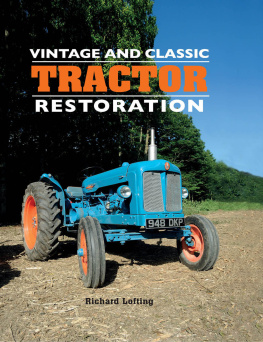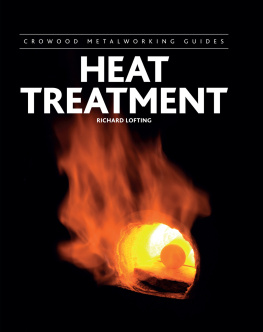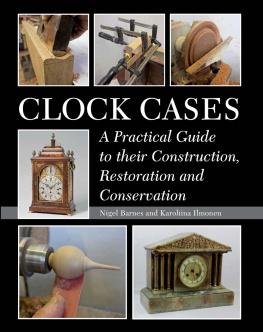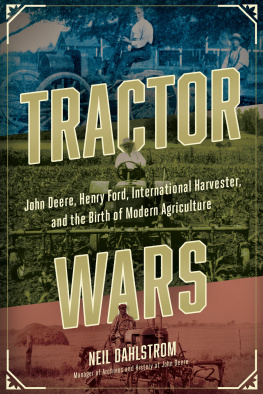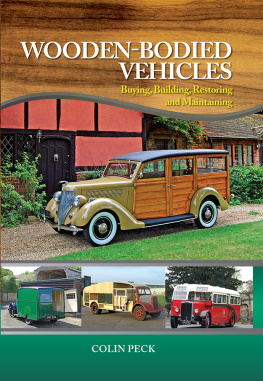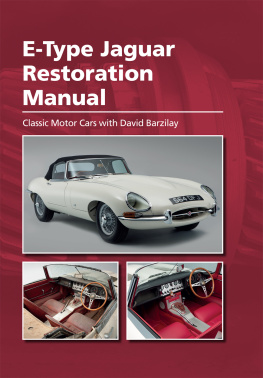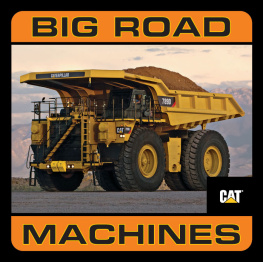
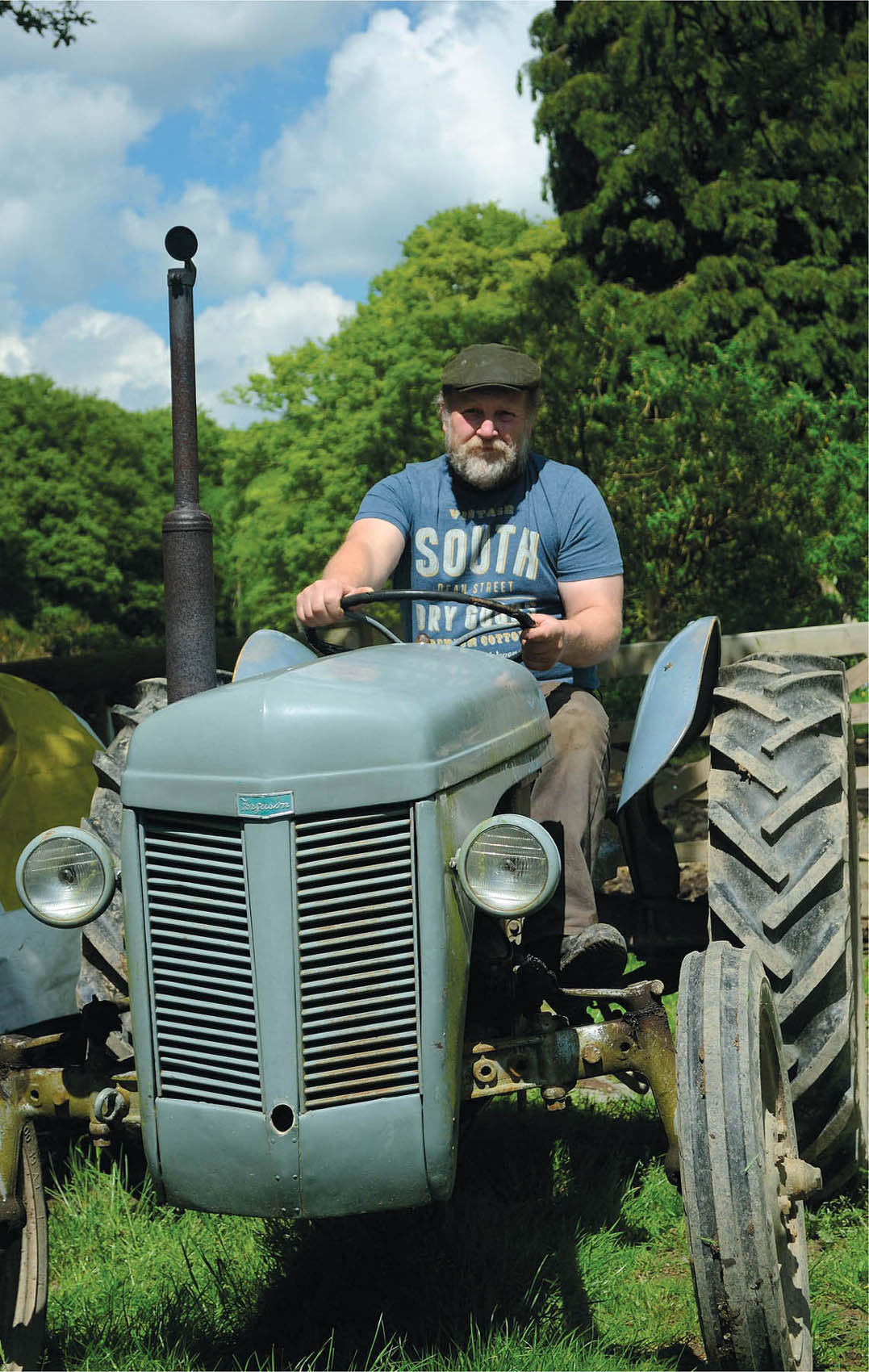


THE CROWOOD PRESS
First published in 2017 by
The Crowood Press Ltd
Ramsbury, Marlborough
Wiltshire SN8 2HR
www.crowood.com
This e-book first published in 2017
Richard Lofting 2017
All rights reserved. No part of this publication may be reproduced or transmitted in any form or by any means, electronic or mechanical, including photocopy, recording, or any information storage and retrieval system, without permission in writing from the publishers.
British Library Cataloguing-in-Publication Data
A catalogue record for this book is available from the British Library.
ISBN 978 1 78500 267 0
Disclaimer
Safety is of the utmost importance in every aspect of an automotive workshop. The practical procedures and the tools and equipment used in automotive workshops are potentially dangerous. Tools should used in strict accordance with the manufacturers recommended procedures and current health and safety regulations. The author and publisher cannot accept responsibility for any accident or injury caused by following the advice given in this book.
Dedication
I would like to dedicate this book to my late father, Richard William Lofting, a kind, quiet and gentle man, one of lifes natural enthusiastic teachers, my inspiration.
Acknowledgements
I would like to thank friends and family who have helped me in many ways with this book from start to finish: the long hours at the keyboard, tea supplied by my wife Pam, and the friends who have suffered the intrusive lens of my camera while doing certain tasks to illustrate how things are done. And above all else I thank my children and granddaughter who have cheered me up when things have been a struggle and I thought I would not reach the end.
contents
introduction
The original concept of this book was to act as a bank of knowledge for anyone interested in restoring or indeed keeping an old tractor running, as there is little in the way of a comprehensive work covering all topics. There are books available on specific topics such as painting, but I wanted to explain the whole process from start to finish, and what can be achieved with a little knowledge and guidance. There are many vintage and classic tractors still working for a living, for example mowing cricket pitches, and many a stableyard still runs an old tractor for tasks such as dung carting and raking the mange and of course there are many old tractors stuck at the back of farmyard barns, superseded by modern machinery, all begging to be restored before they are weighed in at the scrapyard, as scrap-metal prices are ever on the increase, with countries such as China and India expanding their industrial activities.
You may well ask, who restores tractors? The answer to this is people from all walks of life: farm workers who had an old tractor of the same make and model on the farm in years gone by, through to the accountant or bank clerk who has a mechanical bent, and enjoys nothing more than to get his hands dirty at the weekend, enjoying a hobby that gives him a complete change from the clean, clinical environment in the office. And it is not only country folk who restore tractors, though they are at an advantage when it comes to driving their pride and joy, with more space and gardens for test drives: many a suburban garage door hides a vintage or classic tractor.
This book covers all the techniques that can be used in the restoration of a tractor and many other types of vehicle, come to that. All stages are explained, along with the basic theory as to how things work, giving the budding restorer a better insight into his new-found hobby and indeed there is much information for the experienced restorer, who just requires reference to vital data while adjusting things or doing a rebuild.
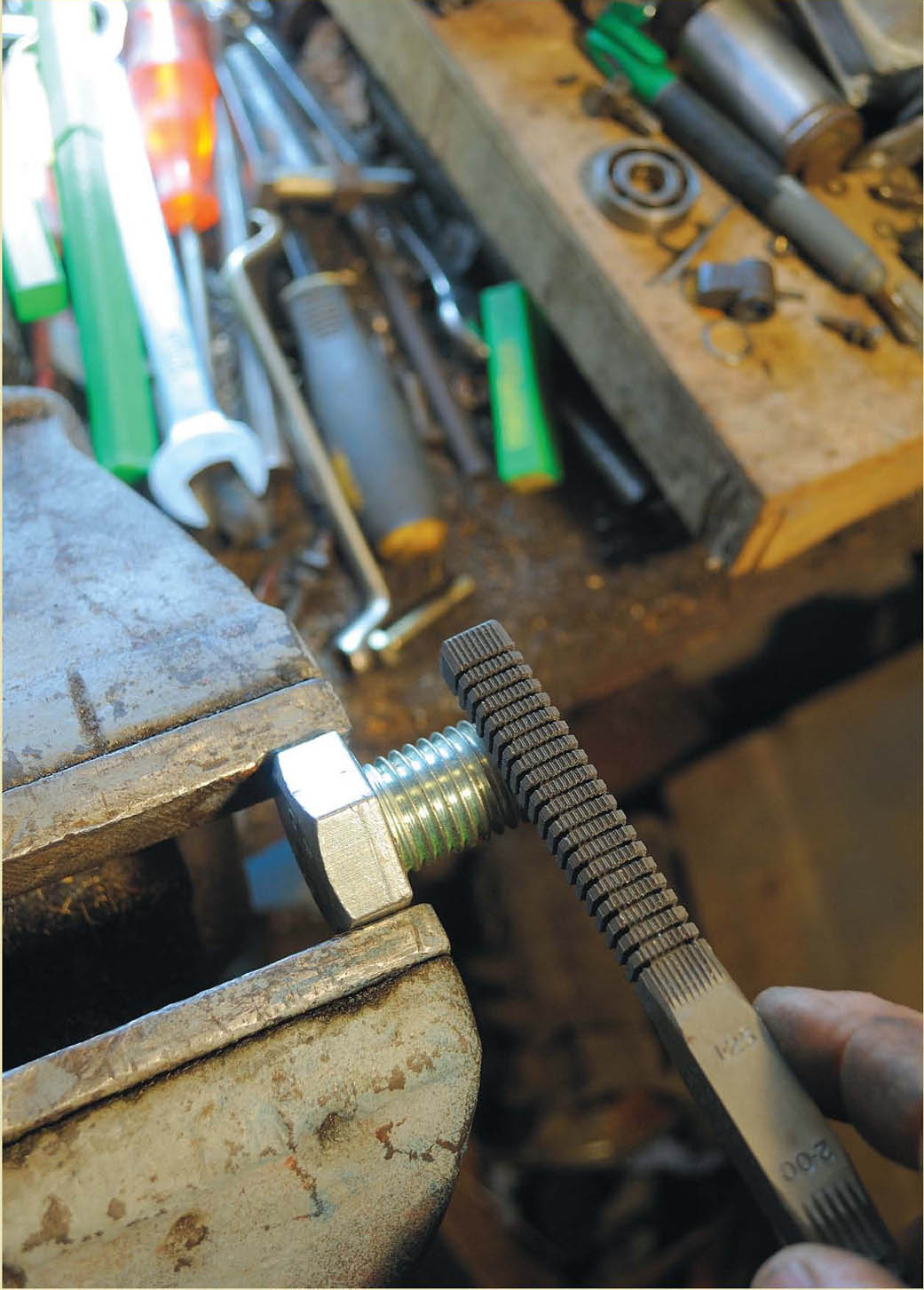
A thread file can save the thread on a damaged bolt.
THE AUTHOR
I have had an interest in engineering and all things mechanical for most of my life. I come from a background of make do and mend, with both my parents being children during World War II: nothing was ever thrown away, and everything was mended if possible, unlike today, where so many things are discarded and binned without even being looked at. My father was a first-class mechanic in the Fleet Air Arm of the Royal Navy, working on aeroplane engines. Luckily the war was over as his training finished so he never saw active service. I was lucky in that when I was at secondary school, metalwork was on the curriculum along with technical drawing; we were taught to use the lathe and forge, amongst other tools, and learned not only how to draw, but how to read a technical drawing this was all long before health and safety regulations curtailed these valuable lessons, and of course with drawing programs now available on computers, actually using pencil and paper has become more or less redundant.
I was brought up in the Kent countryside, and visited a local farm from an early age, where my mum picked strawberries. Although it was a relatively small farm they had a Ferguson TE20 tractor and a Massey Ferguson bagging combine, and it was here that I had my first encounters with tractors and other farm machinery. Once I had reached the age of fifteen I was working in the school holidays bale carting at another local farm, and here I had my first tractor-driving experiences, on a Mk 1 Massey Ferguson 65 and a tatty Fordson Major, although at that time not on the public highway.
The first tractor I owned was when I was eighteen: my girlfriend Pamelas father had an old TED 20 Ferguson in his garage with a stuck clutch; I fiddled around with it and got it going, and freed the clutch by starting the tractor in gear and driving it round the field for about twenty minutes with the clutch pedal held down. I was told that as I had got the tractor going, I could have it! I still have this tractor today, and it is featured in some of the restoration photos that feature throughout this book; incidentally I still have the girlfriend, too: I married her twentyeight years ago, and now we have two grown-up children who both enjoy old tractors, probably as much as I do!
Although I still love the Ferguson TE 20 tractors, of late I have discovered the virtues of the hot-bulb, semi-diesel-engined tractors, in my case SFV tractors built exclusively in France, so popular on the vintage scene in Europe and I make no apologies for its inclusion in the book. These tractors some say quirky! are becoming popular in the UK in the tractor-collecting world, though they never became mainstream in their day. When single-cylinder tractors were used on the farm, the British-built Field Marshall tractor became established, without the requirement of lighting a blowlamp to start it, as with the hot-bulb engines. I would argue that a hot-bulb engine, although it has to be pre-heated with a blow lamp, is easier to start than a Field Marshall because a hot bulb is bounced against compression, whereas a Field Marshall has to be turned over several times until the decompressor closes. Others may disagree!
Next page
